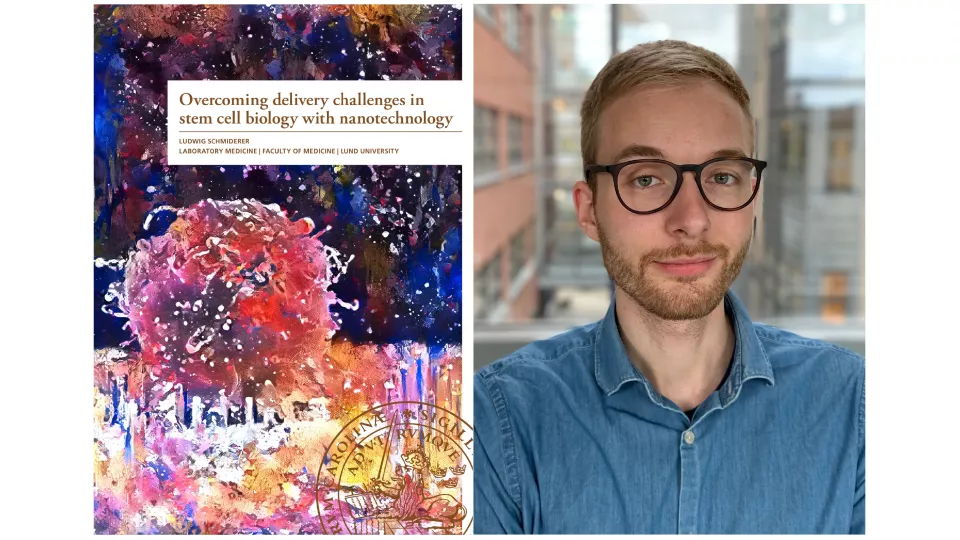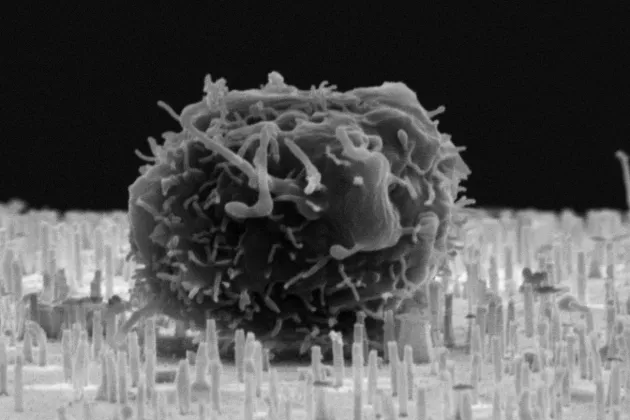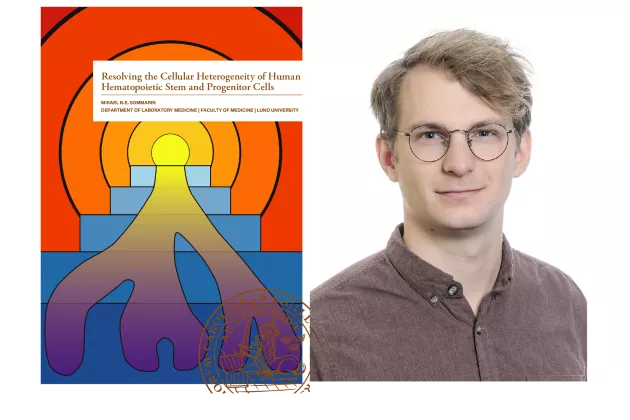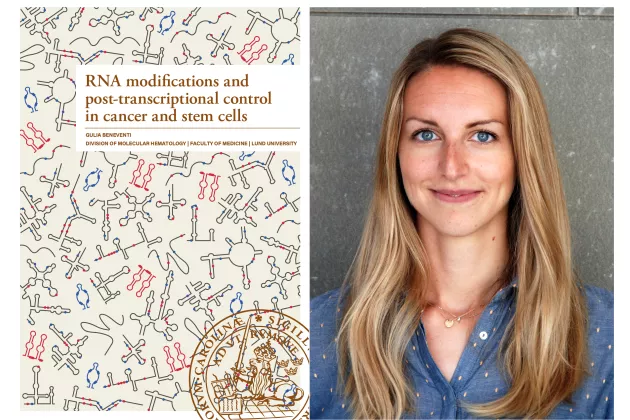What have you been working with during your PhD studies?
At the beginning of my PhD, I was trying to reengineer the CRISPR/Cas9 system to make it work in mitochondria instead of nucleus. The project started off quite well but then we faced a lot of challenges and it turned out that importing guide RNA to mitochondria was not possible. In the end we had to make a difficult decision to stop working on this project and do something completely different. Due to these hurdles, I got interested in alternative transfection methods and reached out to a lot of experts in that field. I was lucky to get in touch with Martin Hjort who eventually became my main collaborator. He manufactures nanostraws which are a technology that can be used to deliver biomolecules to all kinds of different cell types. We have started working together and found out that we can use nanostraws to deliver biomolecules to blood stem cells in a uniquely gentle manner. This is in contrast with other transfection methods such as electroporation which negatively affects cell viability and performance after the treatment. In my first publication, we managed to get GFP mRNA and certain other biomolecules into cells with high efficiency. Our ultimate goal was to use this method to deliver gene editing agents such as CRISPR/Cas9. Initially, we were only able to reach up to about 5% editing efficiency and that was not enough to proceed with further experiments. Therefore, we did a number of optimizations and increased efficiency to up to around 30% by changing nanostraw diameter and delivery conditions. We were also able to use this tool to create RPS19 knock-out model for one of our collaborators in the department. Since a loss of RPS19 sensitizes cells to different kind of stress, such as the one caused by electroporation, our co-workers have been struggling with generating the knock-out model while employing this method to deliver CRISPR/Cas9. By using nanostraws instead of electroporation, we were able to recover sufficient numbers of cells. These cells faithfully mimicked the disease phenotype of Diamond Blackfan anemia and could be used to test the efficiency of a lentiviral gene therapy vector.
How did you come up with idea of the cover page of your thesis?
Martin and I recorded an electron micrograph of a cell that is sitting on top of a nanostraws membrane. I really liked this picture and I wanted to use it for my cover, but I thought that something that is slightly more colourful and artistic would be nice. I have closely followed the developments in the artificial intelligence field and I am fascinated by how AI can be used to make art. Therefore, I decided to use an AI art generator to transfer the style of a painting that I liked to the electron micrograph. The original painting is a part of Cassandra Miller’s Synesthesia Abstract Art series.
How did you end up doing PhD in the Larsson group?
After finishing my Bachelor’s studies, I was excited about going abroad, experiencing a different culture and learning something completely new. I went over Master’s programs that were available in Europe and I was most excited about the Molecular Biology program in Lund. I applied, got accepted and eventually started my Master’s project together with Jonas Larsson and David Yudovich, a PhD student in Jonas’ group. We were trying to establish CRISPR-based gene silencing in blood stem cells. I enjoyed working in the group and got fascinated about the possibility of using CRISPR/Cas9 in mitochondria. I pitched this idea to my supervisor, and we decided to give it a shot as a PhD project. I really liked Lund and I was extremely happy I could stay here longer and continue as a PhD student.
What has been the most challenging aspect of your PhD?
My first project unfortunately did not work out as expected. Accepting this fact, deciding to stop working on this project and finding a way to start something different was the most challenging aspect of my PhD studies.
What have you enjoyed the most during your PhD?
What I have enjoyed the most was meeting so many great people here. I have become good friends with several of them, both members of Jonas’ group and others working in our department. We have done a lot of fun activities together – spent vacation, attended conferences and played board games.
One of the other exciting moments for me was when I realised that nanostraws are a great tool that has unique advantages compared to other methods, and that it might enable researchers to make important discoveries in the future.





